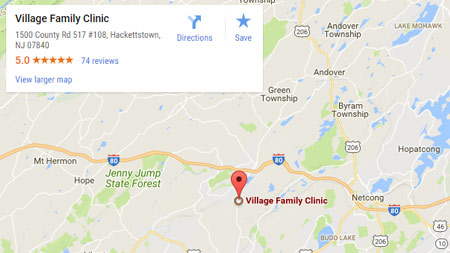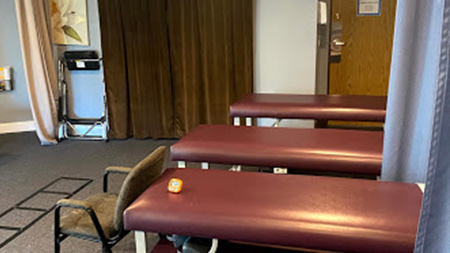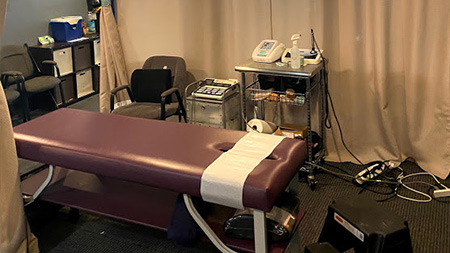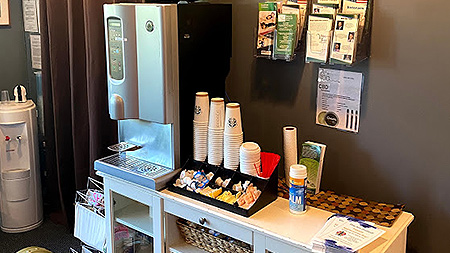Herniated Disc and Bulging Disc Treatment in Hackettstown, NJ
One of the most common questions we get here at the clinic is in regards to disc herniations and disc bulges. There is a lot of misunderstanding and a lot of fancy vernacular regarding these issues. Hopefully, I will be able to explain these things a little bit better along with some of the treatment options available to you.
Very common problems of disc bulge or herniation: there are maybe about 15% of people who have one and don’t even know it. The disc can bulge or herniate before it even causes pain. And on top of that, there are many people suffering from disc pain. This is a pretty common issue.
A little anatomy lesson: On our back, between the neck and the back, there are 26 bones or vertebrae. At the lower back, there are 5. We’ll just number them with 1, 2, 3, 4, and 5. And down here there is a lot going on in your pelvis. The distance or the spaces between the bones or vertebrae do two things for you. They space these bones apart and they are our body’s natural shock absorbers. So the bouncing around while doing stuff throughout the day, exercising, it absorbs that shock. The other important goal is to space these vertebrae apart.
You can see how these nerves exit in between each vertebrae. These nerves go down in different areas. In the neck, the majority go down to the arms. In the lower back, the majority go down to the legs. So most feel vertebral sciatica where patients are having leg pain at the back of their leg. Typically there is something pinching or irritating the nerve shooting down onto the leg.
So if these are synchronized and smooth, everybody is happy. Everything is working well. And we take a little zoomed in look at the top of this disc here and explain a little more about what a disc looks like. I explain to my patients that discs look like jelly doughnuts. There is a nice fiber that holds everything together and inside there is some soft liquid. And we are looking at the discs here, this part is the fiber that holds everything together and this part here is kind of like the jelly inside that absorbs the shock. That’s a good system.
What can happen with these discs is, overtime they can get worn out. Those fibers start tearing on the outside and they can bulge or herniate. There is a difference between the two. Some people use the terms interchangeably. They are not exactly the same thing.
What a disc bulge means is that the jelly doughnut still holds together, it’s just pushing out a little bit. So the outside of the doughnuts are still intact. It is just pushed out a little bit. What a herniation definitely means is that fibers have torn and some of that jelly is now coming out of the disc. One is worse than the other. Typically herniations are a little more serious than bulging discs, but not necessarily.
What that would look like is this model here, we got a nice disc here and we can see this piece coming outward where it is not supposed to be. We see the other side is normal. And there are big spaces in there for the vertebrae. Over here, with that disc bulging out, it could be compressing and putting pressure on that nerve.
So the interesting part about the disc is that it is the only part of the human body with no nerve supply and no blood supply. So that means that you do not actually feel the disc. So if somebody says you have disc pain, you typically don’t have disc pain, it’s the disc rubbing the nerve or something else causing pain because you can’t actually feel a disc.
The interesting part is there is no blood supply to a disc. So for example, when you cut your skin, blood flows and it heals. Everybody can kind of understand that. But if you cut a disc, it will not heal on its own because it does not have a natural blood supply. It does heal by movement. The discs move and the fluids pumps in and out and are able to heal it. But when the disc is herniated or injured, it does not tend to heal on its own.
So there are several treatments available. Chiropractors, physical therapy, and acupuncture for the minor disc issues can treat the pain and sometimes release some of the symptoms. However, when there really is a nice bulge putting pressure on the nerve, massage, acupuncture therapy, all of that stuff helps the muscle release some of the pain.
But ultimately, if that piece is still putting pressure on the nerve, there are going to be some symptoms. What we do here in the clinic is there are two tables behind us. These are nonsurgical spinal decompression devices. We have two of them here. State-of-the art, FDA-approved technology relieves disc bulges. And what the machine technically does is that it tractions or stretches to open the spine in order to suck a piece of that disc back in. So the disc is out. This table will traction the spine and the disc can get sucked in a little bit.
Our patients are not going to be right back to normal. They are not going to be a hundred percent typically. But if this is pushed out 3mm, we get it sucked in 1 1/2 or 1 mm, just enough to pull up the nerve, there will be no more pain. After the traction device does that, you will feel a lot better.
There are big advances of these tables. Years ago, we’d put you in the hospital on traction. You’d sit down on the traction table for a whole day pulling on the spine. We found out that the spine rarely likes being pulled for 8 hours of the time.
So what the nonsurgical spinal decompression therapy in Hackettstown, NJ does is slowly pull, hold for a period of time, releases some of that pressure, and pulls in cycles. That allows your body a break. And that is how to plump the fluid in there. And that can help heal and regenerate that disc to some degree. So this is a great alternative for you.
Other alternatives available are epidermal injections where they do a cortisone steroid injection into the nerve to calm it down. And of course, for a little more drastic case is surgery. That’s pretty rare but it certainly happens that a disc is bad enough that it needs surgery to take it out. But obviously this is a very delicate area so we want to avoid surgery at all cost. Hope I answered all your questions about this.
For more details about benefits of spinal decompression and its processes, contact Village Family Clinic
Dr. James Fedich, DC
Clinic Director














